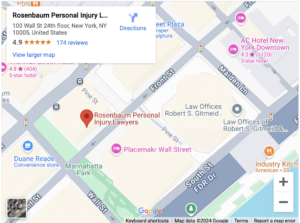Study: Patients Do Not Always Receive Accurate Diagnosis
A study shows how medical misdiagnosis affects people who are seen in outpatient and emergency room settings.
Medical workers are some of the most trusted professionals in New York and throughout the United States. Millions of people put their lives in the hands of healthcare professionals on a daily basis. Despite this trust, however, people may not receive the quality of care they expect when seeing a professional in a medical setting. Researchers have long studied medical care and the types of mistakes that may occur at the doctor’s office.
The study
People who are seen in an emergency room or outpatient clinic often expect an accurate diagnosis when being treated for a condition or ailment. A study, published in BMJ Quality & Safety, found that one in 20 adults who are seen in these settings leave with a wrong diagnosis or are not properly diagnosed at all. This equates to roughly 12 million American adults every year. In approximately six million cases, patients were harmed because of the misdiagnosis. Researchers are looking into what causes misdiagnosis or failure to diagnose a patient, as well as how it affects patients and what can be done to minimize this type of medical malpractice.
Causes of misdiagnosis
Patients who are seen in outpatient clinics or emergency rooms, often do not have a history or continuing relationship with attending medical staff. Doctors may not have a complete medical history of the patient to tell them what has happened in the past or symptoms that may indicate a certain condition. The chaotic environment of these settings can also contribute to a miscommunication between medical staff. Something may get overlooked in the rush to help as many patients as possible in a short amount of time. Furthermore, physicians who order the wrong screening tests or misinterpret these tests are more likely to misdiagnose patients. Medical negligence from fatigued and unqualified staff is also to blame.
Implications
Patients who leave the doctor’s office or emergency room with the wrong diagnosis or without a diagnosis at all run the risk of having the condition worsen. They may be taking a medication that does not treat the condition they are suffering with, and the side effects may even complicate the situation. In addition, patients do not usually have follow-up appointments at these types of settings. It may be up to the patient to let their primary care physician know what is going on.
Getting legal attention
If you have been injured or harmed in a case of medical malpractice, you may want to speak to an attorney regarding your legal options and rights. You may be eligible for compensation for your extra medical expenses, pain and suffering.
Contact the New York City Personal Injury Law Firm of Rosenbaum Personal Injury Lawyers for Help Today
If you’ve been injured in an accident in Manhattan, NY, and need legal help, contact our personal injury lawyers at Rosenbaum Personal Injury Lawyers to schedule a free consultation. We also serve in Brooklyn and the Bronx.
Rosenbaum Personal Injury Lawyers – New York City Office
100 Wall St, 24th Floor
New York, NY 10005
(212) 514-5007
Our firm is located near you. We have an office in NYC
Find us with our GeoCoordinates: 40.7051415,-74.0067386
Rosenbaum Personal Injury Lawyers – Bronx Office
1578 Williamsbridge Rd suite 3b
Bronx, NY 10461
(929) 447-2347
Our firm is located near you. We have an office in the Bronx
Find us with our GeoCoordinates: 40.8468944,-73.8483118
Rosenbaum Personal Injury Lawyers – Brooklyn Office
32 Court St #704
Brooklyn, NY 11201
(718) 550-3601
Our firm is located near you. We have an office in Brooklyn
Find us with our GeoCoordinates: 40.692948,-73.991038



